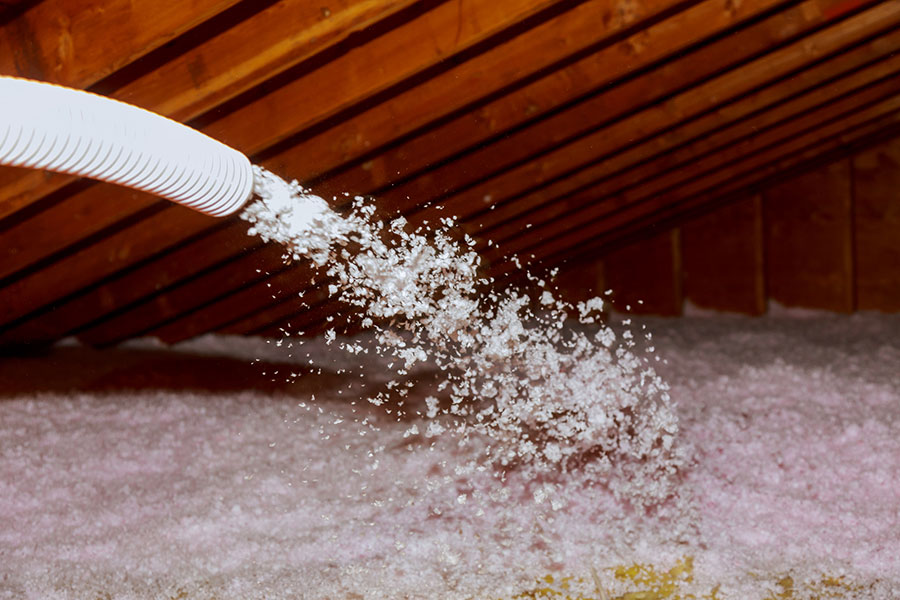Create a more comfortable, efficient house
There are few things as comforting as sitting in a cozy room, a mug of hot something cradled in your hands, gazing out the window at a glittering midwinter landscape.
Unless the soundtrack is the nonstop roar of a furnace struggling to keep up against drafts. And the inside of that window is skirted in ice. And if your skyhigh natural gas bill is sitting on a table nearby, a cold reminder that your comfort comes at great expense.
You can alter this scene so that the furnace is quieter, the window clearer, the gas bill a little smaller. Construction Engineering Technology instructor Kenneth Williams has ideas on how to keep winter on the right side of the wall and the costs of comfort in check.
Here, he describes six common heat-loss culprits in your home during an Alberta winter, and what to do about them.
1. Electrical outlets

A perfect piece of drywall, say Williams, will allow about 0.3 litres of water vapour through it each year. A one-square-inch hole increases that volume by a factor of 1,000, allowing 30 litres through each year.
This is bad. Water vapour, or humidity, infiltrates insulation. “Insulation relies on air pockets,” says Williams. “If we’re now displacing the air with moisture, it becomes a heat conductor.”
Consider a typical electrical outlet – essentially a large hole in the wall. “Now you’re allowing huge volumes of moisture to pass through your wall assembly.” Seal it by removing the faceplate and ensuring that the plastic vapour barrier behind the drywall makes contact with the electrical box, and that no holes in the box itself allow air to pass through.
You can also install a foam insulator pad behind the faceplate, made specifically for this purpose.
2. Doors

One message that Williams impresses upon his students is that “buildings shouldn’t suck.”
He’s speaking literally. “They should be pressurized to lose air, if anything,” he adds.
It’s better to slowly warm air than to have cold air sneak in. When an occupant feels a draft, says Williams, they’re likely to turn up the thermostat, increasing the energy demand.
To prevent that, look for daylight slipping through the space between the exterior doors and jambs and block it with inexpensive weather stripping. “The easiest thing is to not allow free air flow through your doors,” says Williams. “Make sure they’re sealing properly.”
3. Home exhaust air

The exhaust air from your home ventilation systems leaves at a temperature of roughly 20 C. On a midwinter day, however, the incoming fresh air that feeds your furnace enters at about -20 C (or worse). “That’s a 40-degree temperature swing,” says Williams. And it strains the furnace.
It’s not as simple a fix as running a line of weather stripping, but the balance can be partially restored by a heat recovery ventilator. This gadget (which runs around $1,000) ties into the ductwork and uses warmth from exhaust air to take some of the chill out of the fresh stuff before it gets to the furnace. Less natural gas is then needed to bring it to room temperature.
“We’re using the energy that we’ve already bought and paid for to preheat the air coming in,” says Williams.
4. Windows

You clearly saw this coming. But don’t worry: Williams knows that upgrading to fancy triple-pane casement windows is pricey. That’s why he recommends other fixes first.
“The biggest issue with windows is how they’re sealed around the perimeter.”
Remove the casing and fill any gaps in the insulation. Batting should remain loose to keep those essential air pockets open. If you opt for spray foam, a can will often do a few frames, Williams says, so consider opening up more than one window at a time. Reinstall vapour barrier to the edge of the window frame before replacing casing boards.
There is benefit in replacing rickety old aluminum sliders, Williams concedes. Modern models are “thermally broken,” he says, meaning the frame has outside and inside sections that are separated by an air-filled gasket to help prevent heat transfer.
What’s more, going from double pane to triple means jumping from an R value (a measure of insulation effectiveness) of about 5 to 7.5, or “almost a 50% gain,” says Williams.
5. The attic

Attics should be frigid spaces in winter. Ideally, chilly air enters from the base of the roof and pushes air out at the top, creating a consistently cold current that can prevent damaging ice dams along the eaves.
Being cold, attics can draw heat from the home below. Prevent that with a cover of 30 centimetres or more of insulation, says Williams, for an R value of about 41, consistent with new builds. Like you would with electrical outlets, seal around pot lights or other openings in the ceiling. Given the breadth of the surface, don’t expect perfection.
“No matter how well I insulate my ceiling,” says Williams. “I will always get some heat loss.”
6. Humidity

If you can make sure there isn’t excess water in the air in the first place, it’s not going to dampen your insulation, or your spirits when it comes to home efficiency.
This may be one of the easiest fixes of all. If you have a humidifier, and you notice condensation on the bottoms of your windows, turn it down. If you don’t have one, don’t sweat it. “Having a humidifier may be a little bit redundant,” says Williams. “Living, breathing, cooking, showering, bathing, doing laundry – all of those introduce humidity into the home.”
The key to comfort is to not introduce it into the walls.
Banner image Emilija Randjelovic/istockphoto.com